
Knowing how to support a scared or anxious pet is essential for pet parents whose fur friend is experiencing bouts of anxiety or stress. Any pet parent will agree: we all want our cute companions to live long and happy lives. But just like humans, some pets can suffer from anxiety and stress.
Vet visits that can cause fear in dogs, loud noises like fireworks that frighten your pooch, or rogue cucumbers that cause your cat to leap in the other direction can all be causes of stress for our pets. Unfortunately, in 2024, stress and anxiety in dogs and cats aren't uncommon and there could be lots of reasons why your dog is anxious.
From separation anxiety to social anxiety. To our pets, the big wide world can seem like a scary place. But with you by their side, it doesn't have to be this way. So, to help support a scared or anxious pet during their time of need, stick right here. We've rounded up some of the best tips and tricks to keep their worries at bay.
Ways to support a scared or anxious pet
1. Play music

Music really is the gift that keeps on giving. It might seem unconventional, but research published in the Journal of Animals shows that classical music, like Beethoven, Mozart or Chopin, can help relax dogs in stressful situations.
While another study, published in 2020 in Journal of Feline Medicine and Surgery
shows that playing music for cats can help calm their nerves while going through a stressful vet visit.
2. Avoid doing things that scare them

This one's a no-brainer! Let’s face it, you wouldn’t want to be confronted with your fear every day, week, or month, right? And the same goes for our loveable fur friends.
So whether it’s fireworks they’re scared of, cucumbers, or confined spaces, try to keep their stress levels at bay by avoiding things that cause their body to go into fight or flight mode.
3. Introduce new things slowly

Change can be scary. Especially when it comes to welcoming a second feline friend into your home. Cats can be territorial creatures and bringing another four-legged baby home can cause stress and anxiety in cats.
So your best bet? According to a study published in Applied Animal Behaviour Science, a gradual approach ‘significantly reduces’ aggression among feline friends and can help keep the peace, while keeping stress levels down.
4. Praise calm behavior

Do you want your cat or dog to exhibit more calm behavior? Then let them know that calm behavior is good behavior by rewarding them with some of the best puppy treats or the best kitten treats when they show signs of this warranted act.
5. Try to remain calm

Here's a fun fact for you: pets can pick up on your anxieties and worries and they can read your body language. Meaning? The more stressed you are, the more stressed your cat or dog is likely to be.
So if you want to support them during times of worry, stay cool, calm and collected.
6. Try a cat collar
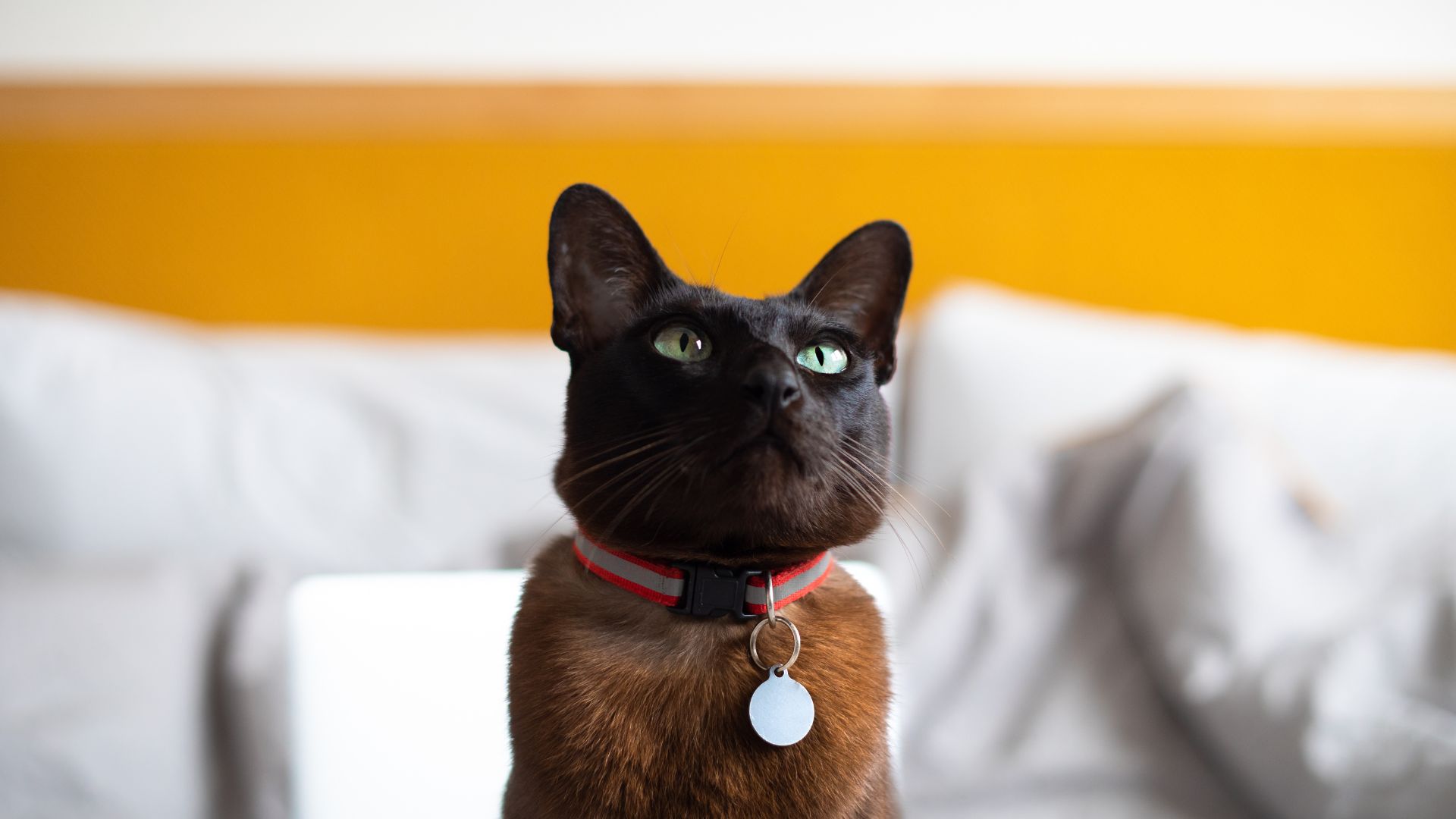
The best calming cat collars contain a clever combination of essential oils and pheromones which have been shown to be effective in helping some cats feel more zen.
Nowadays you can get many cat collars including waterproof options, reflective designs, and multi-packs that will last you months.
7. Introduce a calming bed

Heard of calming dog beds? These sleep solutions are typically oval or circular in shape, and have a central deep soft nesting area with raised edges. The best calming dog beds are comfy, and supportive and can help your pooch feel a sense of security.
We all know that having an extra comfortable and stress-free environment to sleep in can promote longer sleep and rest periods — which can be highly beneficial for dogs who experience stress and anxiety.
8. Make sure you’re not encouraging fear

Anxiety in cats isn’t uncommon. Whether it’s illness or pain, anxieties that formed early in their lives due to improper socialization, or separation anxiety, there are many reasons why your fur friend may be feeling anxious.
And the same goes for dogs. From separation anxiety and sound sensitivity anxiety to age anxiety and social anxiety, there are various types of anxiety your pooch may be suffering from. Either way, once you’ve figured out what the root cause of the trigger is, make sure you’re not encouraging this fear.
9. Distraction

One of the best ways to help support a scared or anxious pet? Learning the art of distraction. By keeping their mind off the stressful event or situation, this should help them find some calm and keep their anxiety at bay.
To help distract a dog, you might try calling them or start playing with their favorite toy. Treats can also work to lure them away from the point of contention.
10. Make a doggie den

Wondering why your dog is digging? Or perhaps they are hiding under a table or bed? Well, some dogs might dig if they are feeling anxious as digging can help ease their worries.
Other dogs with separation anxiety may demonstrate destructive behaviors like digging. But digging is also a behavior our cute companions have inherited from their wolf ancestors. Just like sleeping in dens.
So, instead of encouraging this destructive behavior, why not make your own doggie den where your pooch will feel safe and comfortable?
11. Physical contact

Physical touch is important for both pet parents and their pets. Most dogs see petting as a form of affection from humans. While most cats love nothing more than being stroked or fussed over.
Of course, every pet is different, but generally speaking, physical contact can help to reduce anxiety, improve relaxation, and strengthen the bond between you and your pet.
12. Exercise

The stress-busting and anxiety-reducing effects exercise can have on humans are well documented. But now the same can be said for dogs too. A 2022 study, published in the Journal of Veterinary Behaviour, investigated the effectiveness of treatments used for dog anxiety across 1,308 pooches. Out of all of the treatments used, like working with a behaviorist, use of medication, and changes to diet, taking part in dog sports scooped the top spot.
13. Give them a quiet space
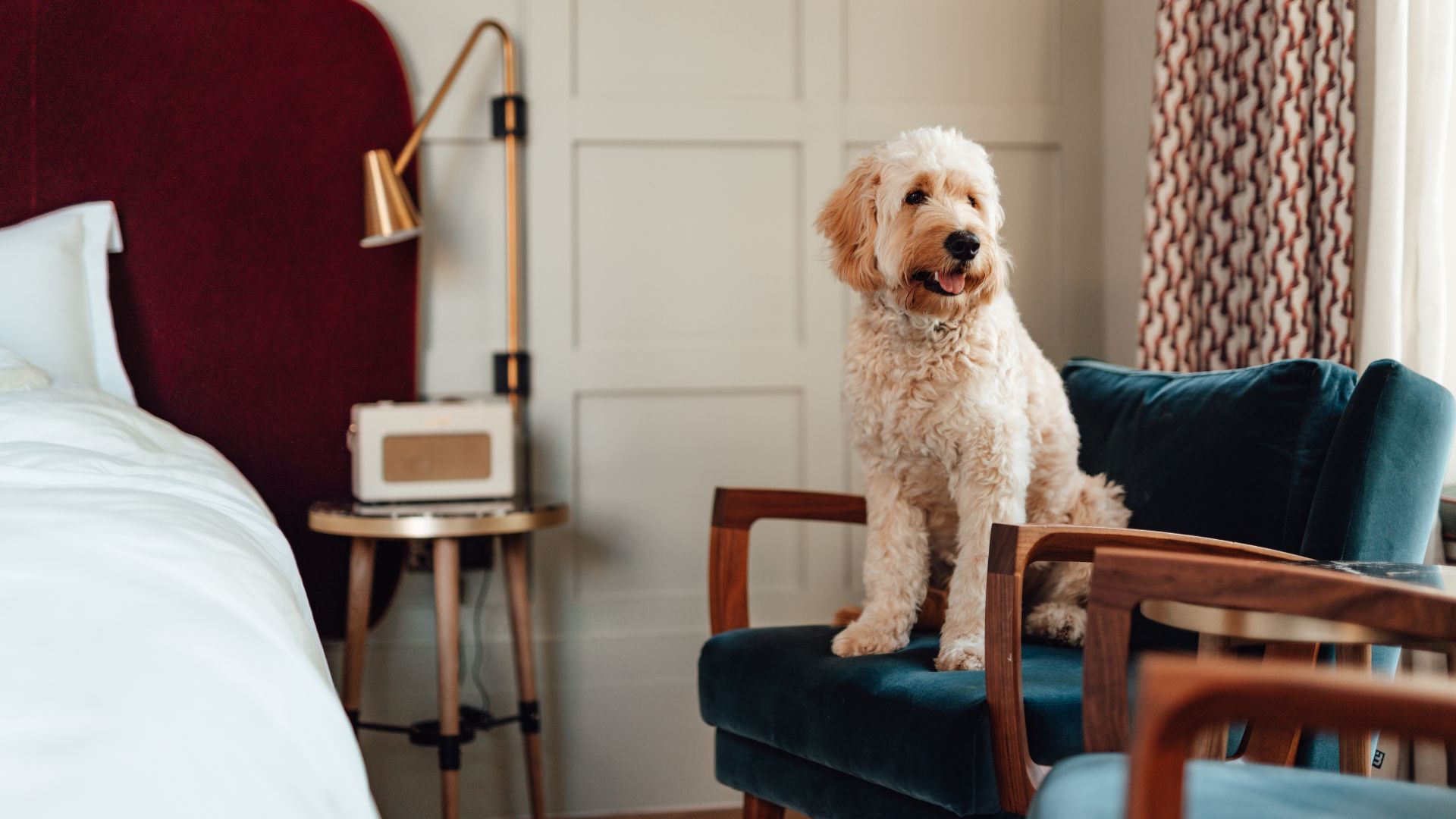
The big wide world can be a loud place for your four-legged friend. If it’s not horns being honked on a busy street, it’s the hustle and bustle that comes with living in a city. Or perhaps you have a big family with children running around the house.
Some cats and dogs can find loud noises triggering. So try to give them a quiet space where they can decompress. This could be a quiet corner, room, or spot.
14. Give them a safe space

This point follows nicely from the previous. If you’re unable to give them a quiet space, you could always give them a safe space. From the best cat tree towers for felines who like to climb to the best dog beds filled with loads of their favorite toys and blankets, these safe spaces are places your pet can come to during times of stress or anxiety.
15. Socialize your pet

Social anxiety can be one cause for your kitty’s anxiousness. But learning how to socialize a kitten is a crucial step in your four-legged friend’s development and will be a marker in how they interact with the world as they grow. Therefore, it’s important to get it right.
16. Consider training
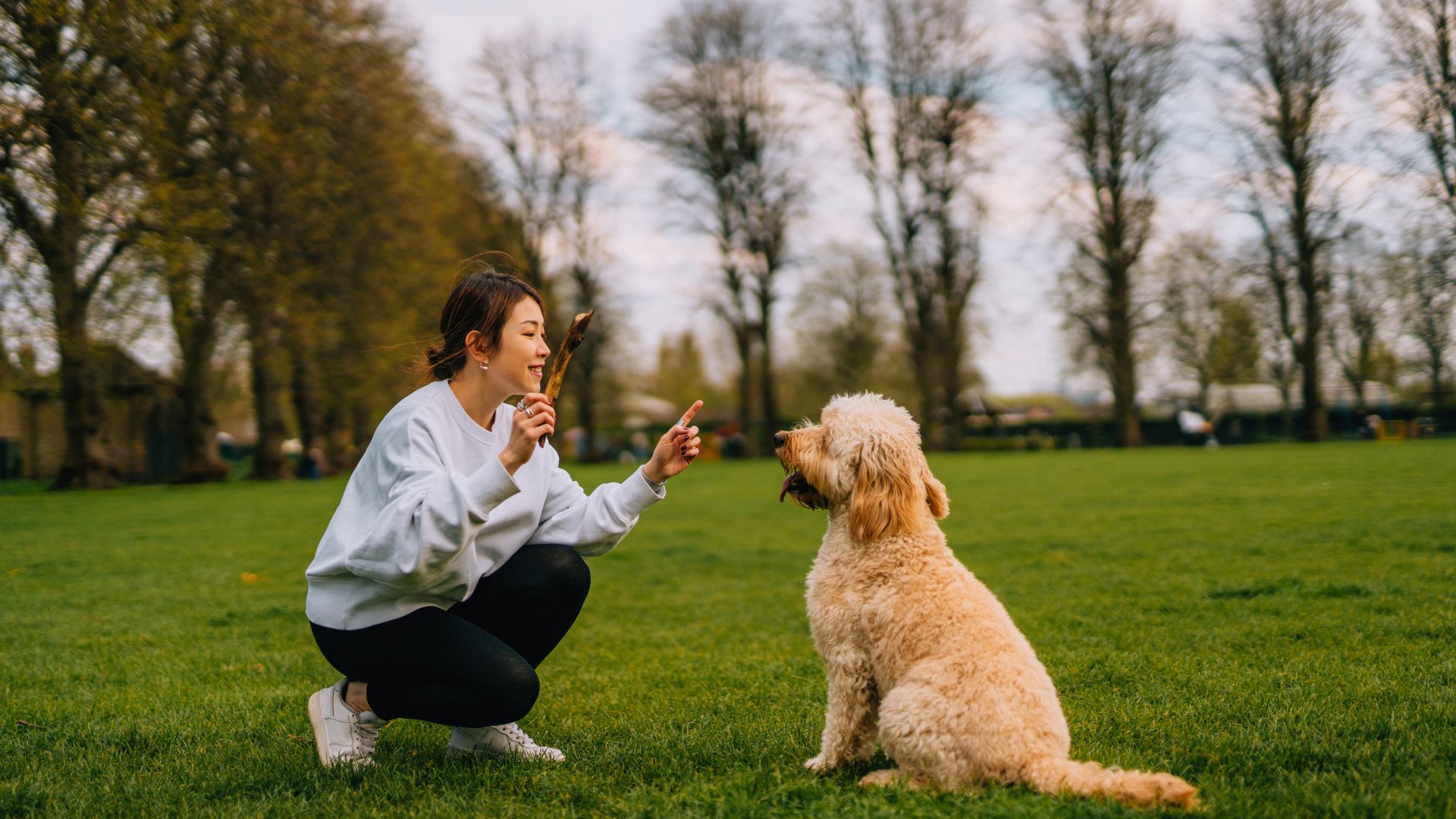
Another brilliant way to help destress your dog and calm an anxious pet? By engaging in some training. We know, there’s a lot to tick off when you’ve welcomed a pet into your world. But training your dog or cat will help set them up for skills they need for life — including coping mechanisms they can lean on when they're feeling fearful. If you’re wondering where to start, take a look at these practical tips for training a dog on your own. Or discover the basics of cat training, according to an expert.
17. Massage

While more studies are needed in animals, there are studies done by Topics in Companion Animal Medicine to suggest that, if used correctly, massage can have brilliant efficiency on a dog and cat’s mental well-being, nervous system, and circulation. So, it’s worth considering how to massage a dog and cat — and if you're unable to do this yourself, try consulting with a professional massage therapist.
18. Calming coats

Also known as a ThunderShirt, these totally natural calming creations work like a ‘swaddle’ by fitting around your pooch’s torso in a bid to help them feel secure, safe, and calm. According to a 2014 study, published in The Journal of Veterinary Behavior, when worn as per the manufacturer’s instructions, swaddled dogs’ heart rates increased less on average. They also showed fewer stress behaviors.
19. Engage in daily activity

As we touched on, exercise is important for most pets, especially those suffering with stress or anxiety. If you've already engaged in some dog agility, why not try other fun games and activities to play with your dog like hide and seek, fetch or scent work?
And if you’ve got a feline friend on your hands, fun games to play with your cat might include interactive puzzles, a feather and string, and other activities you can do with your cat. You can also try out one of the best laser toys for cats, which can provide endless entertainment.
20. Stick to a similar routine

Just like humans, pets thrive when they’re in a good routine. A routine helps them predict what will happen and when, which is important for their well-being. It also helps them feel more in control of what is going on. So try to stick to a similar bedtime, wake time, feed and walk.
21. Stimulate your pet

Whether it’s playing interactive games like hide and seek, taking them to the best US dog beaches or rotating some of the best dog toys or the best cat toys. Just like humans, pets need stimulation to lead long and happy lives. And a happy mind is an entertained one!
22. Help soothe an anxious dog with calming treats

Wondering: do calming treats for dogs work? Well, after speaking to a vet, we bring some good news. Calming dog treats can work. Just like the best long-lasting dog chews, calming dog treats are designed to last for a while, giving your canine something to focus on. This helps keep their thoughts away from whatever it is that is scaring them.
23. Help soothe an anxious cat with calming treats

Just like dogs, calming treats can work on cats too. But how so? Well, most calming treats contain the ingredient alpha-capsazepine, which is a bioactive peptide. Journal of Veterinary Behavior has done a study that has shown this can reduce anxious disorders such as social phobias in cats.
24. Commit to a quality diet

Good nutrition is important to the health and development of your fur friend. Most of our cat and dog's serotonin (the feel-good hormone that helps to regulate mood) comes from the stomach. Therefore a healthy diet is crucial for your companion's wellbeing. So discover the best dry dog foods, the best wet dog foods and the best dry cat food for hungry kitties.
25. Reduce over stimulating activities
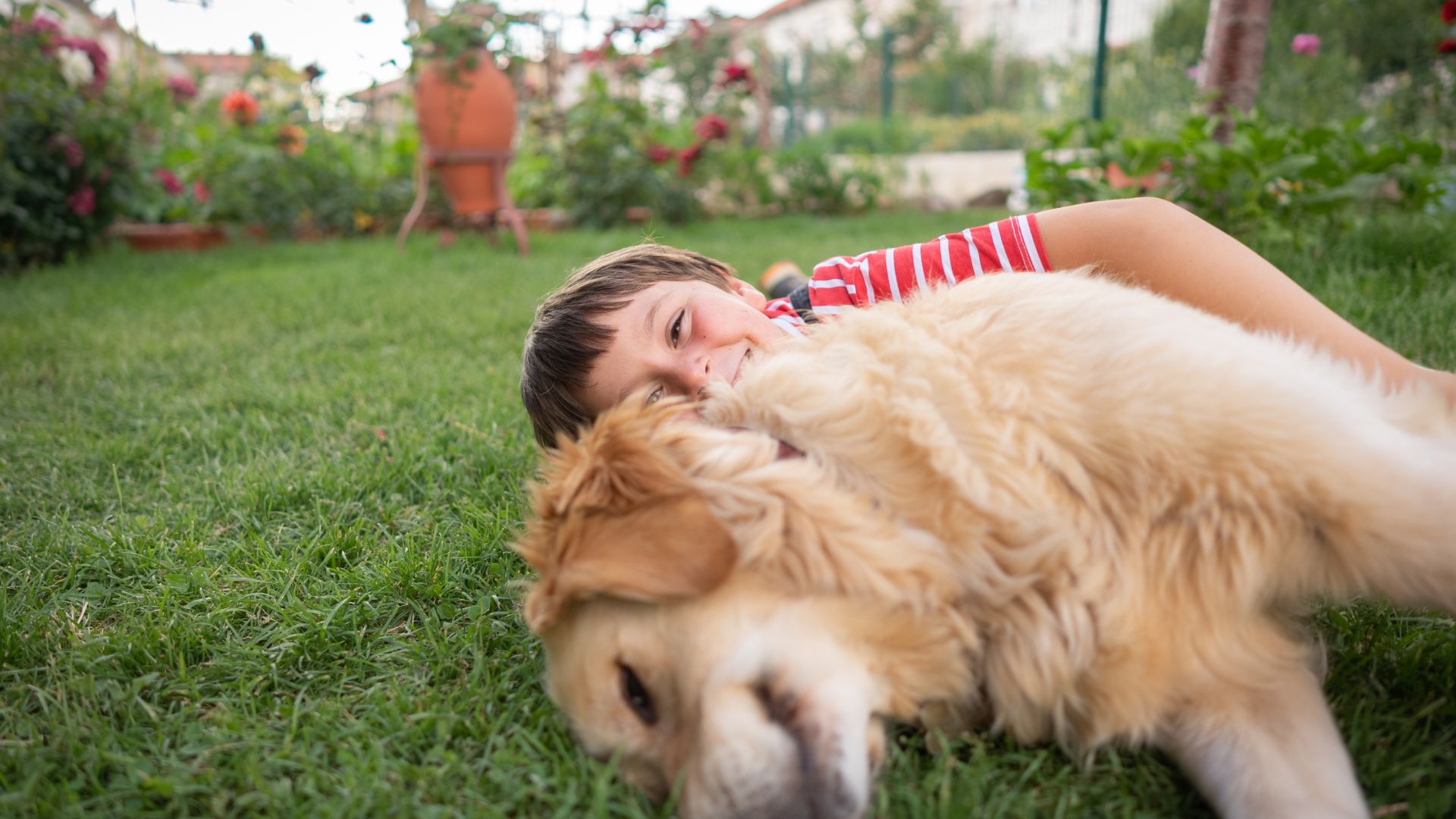
Maybe you live on a busy street, or perhaps you have children who love playing outside in the garden while shouting and laughing away. Either way, loud noises and high-energy activities can be overstimulating for dogs. If that’s the case, drown out noises or limit the amount of time doing overstimulating activities.
26. Enrich their environment

The best dog enrichment ideas can keep your pooch’s mind off their worries and the good times rolling. The same can be said for the best cat enrichment ideas. Or perhaps you have a bearded dragon? If that’s the case, when it comes to bearded dragon care, having stimulating objects like crinkle balls and wands, will ensure your bearded dragon stays mentally and physically well.
27. Remove triggers

Maybe your fur friend isn’t used to the busyness of the outside world just yet. If that’s the case, are there any triggers you can remove? For example, is it social situations? Is it separation from you? Or perhaps it’s loud noises? Either way, once you’ve figured out what their trigger is, see if you can shelter them from it.
28. Get them used to spending time alone

Any pet parent will know how much their dog or cat enjoys spending time with them. Maybe they always sit on your lap, brush past your feet, or try their very best to sleep in bed with you.
But not all pet parents can spend 24 hours of their day at home. Therefore it’s important to get your dog or cat used to spending time alone. This can help reduce separation anxiety in dogs.
29. Work on desensitization

If you do have a scared or anxious pet, consider learning everything you need to know about desensitization. This powerful tool is often used in dog training and behavior modification. It can help our fur friends work to overcome their fears by gradually exposing them to their anxiety triggers in a controlled and positive way. This can help to reduce anxiety in dogs.
30. Give your dog interactive toys
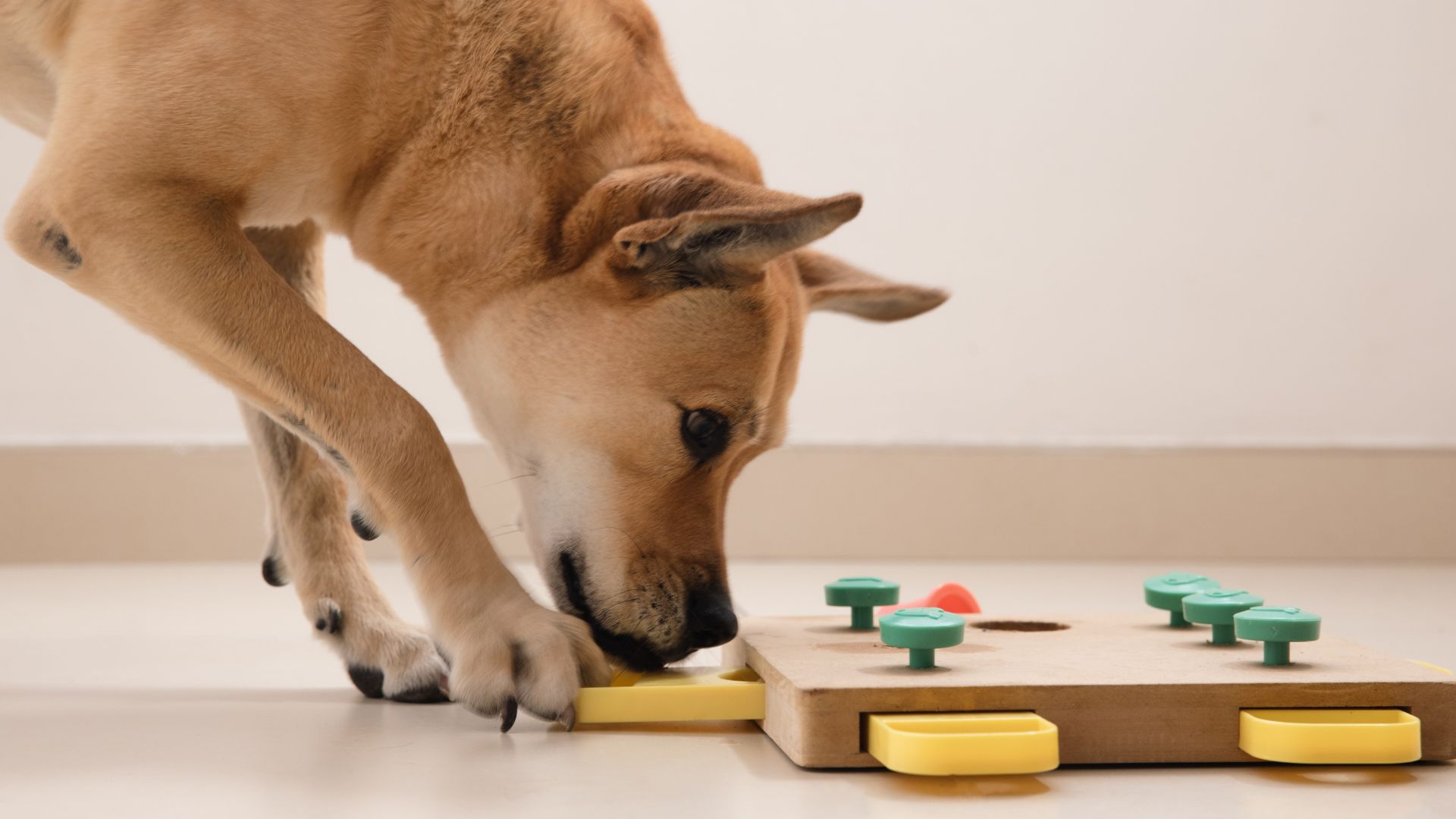
The best boredom busters to keep their mind off their worries? The best dog puzzle toys, help to keep pooches mentally stimulated and their mind sharp. These interactive toys work by challenging your dog to ‘solve’ the puzzle in order to be rewarded. For example, most interactive toys require dogs to use their paws or sense of smell to figure out where the best dog treats have been hidden.
31. Contact your vet

If you’ve tried all of the above but are still struggling to support your scared or anxious pet, it’s time to get in touch with the professionals. A veterinarian may suggest you work with a behavioral specialist or trainer who can help redirect their anxious behavior and help them reduce their stress.
32. Medicate

Some fur friends may be so anxious, that training and distraction alone won’t touch the sides. But after speaking to a vet, your fur friend might prescribe medication along with a good behavior modification training plan.







